W&T Wetenschap & Technologie
Een plek om te discussiŰren over wetenschappelijke onderwerpen, wetenschappelijke problemen, technologische projecten en grootse uitvindingen.



Ik zat m'n foto CDs na te kijken
En daar heb me toch 2 foto's van
Hale-Bopp (April 1997) gevonden.
Het zijn geen parels van foto's
En daar heb me toch 2 foto's van
Hale-Bopp (April 1997) gevonden.
Het zijn geen parels van foto's
<a href="http://www.vwkweb.nl/" rel="nofollow" target="_blank">[b]Vereniging voor weerkunde en klimatologie[/b]</a>
<a href="http://www.estofex.org/" rel="nofollow" target="_blank">[b]ESTOFEX[/b]</a>
<a href="http://www.estofex.org/" rel="nofollow" target="_blank">[b]ESTOFEX[/b]</a>


COMET LEMMON UPDATE:
Glowing much brighter than expected, Comet Lemmon (C/2012 F6) is gliding through the skies of the southern hemisphere about 92 million miles (0.99 AU) from Earth. Amateur astronomer Rolf Wahl Olsen sends this picture from his backyard in Auckland, New Zealand:
"I took this image of Comet Lemmon on the 28th of January," says Olsen. "It has become quite bright now and has also grown a beautiful tail."
Discovered on March 23rd 2012 by the Mount Lemmon survey in Arizona, Comet Lemmon is on an elliptical orbit with a period of almost 11,000 years. This is its first visit to the inner solar system in a very long time. The comet is brightening as it approaches the sun; light curves suggest that it will reach 2nd or 3rd magnitude, similar to the stars in the Big Dipper, in late March when it approaches the sun at about the same distance as Venus (0.7 AU).
At the moment, the comet is glowing like a 7th magnitude star, just below the limit of naked-eye visibility. To capture the faint details of the comet's filamentary tail, Olsen used a 10-inch telescope, a sensitive CCD camera, and an exposure time of 1 hour 17 minutes. Complete photo details are given here.
Lemmon's green color comes from the gases that make up its coma. Jets spewing from the comet's nucleus contain cyanogen (CN: a poisonous gas found in many comets) and diatomic carbon (C2). Both substances glow green when illuminated by sunlight in the near-vacuum of space.
Northern hemisphere observers will get their first good look at the comet in early April; until then it is a target exclusively for astronomers in the southern hemisphere.
Glowing much brighter than expected, Comet Lemmon (C/2012 F6) is gliding through the skies of the southern hemisphere about 92 million miles (0.99 AU) from Earth. Amateur astronomer Rolf Wahl Olsen sends this picture from his backyard in Auckland, New Zealand:
"I took this image of Comet Lemmon on the 28th of January," says Olsen. "It has become quite bright now and has also grown a beautiful tail."
Discovered on March 23rd 2012 by the Mount Lemmon survey in Arizona, Comet Lemmon is on an elliptical orbit with a period of almost 11,000 years. This is its first visit to the inner solar system in a very long time. The comet is brightening as it approaches the sun; light curves suggest that it will reach 2nd or 3rd magnitude, similar to the stars in the Big Dipper, in late March when it approaches the sun at about the same distance as Venus (0.7 AU).
At the moment, the comet is glowing like a 7th magnitude star, just below the limit of naked-eye visibility. To capture the faint details of the comet's filamentary tail, Olsen used a 10-inch telescope, a sensitive CCD camera, and an exposure time of 1 hour 17 minutes. Complete photo details are given here.
Lemmon's green color comes from the gases that make up its coma. Jets spewing from the comet's nucleus contain cyanogen (CN: a poisonous gas found in many comets) and diatomic carbon (C2). Both substances glow green when illuminated by sunlight in the near-vacuum of space.
Northern hemisphere observers will get their first good look at the comet in early April; until then it is a target exclusively for astronomers in the southern hemisphere.
<a href="http://www.vwkweb.nl/" rel="nofollow" target="_blank">[b]Vereniging voor weerkunde en klimatologie[/b]</a>
<a href="http://www.estofex.org/" rel="nofollow" target="_blank">[b]ESTOFEX[/b]</a>
<a href="http://www.estofex.org/" rel="nofollow" target="_blank">[b]ESTOFEX[/b]</a>


COMET ISON SPROUTS A TAIL:
Comet ISON, which is plunging toward the sun for a bright and fiery encounter in late 2013, has just sprouted a tail. It's not much--yet--but that is because the comet is still in deep space near the orbit of Jupiter. On. Feb. 3rd, amateur astronomer Rolando Ligustri photographed the development using a robotic telescope in New Mexico:
klikbaar
Comet ISON doesn't look very impressive now as it glides through the cold vacuum more than 600,000 km from Earth, but its appearance will improve later this year. On Nov. 28th, ISON is going to glide through the sun's atmosphere only 1.1 million km above the stellar surface. It could emerge from the encounter glowing as brightly as the full Moon, visible in broad daylight near the sun. If so, today's budding tail would likely grow into a garish appendage that wows observers in both hemispheres--no telescope required. Stay tuned for updates.
Update:
NASA's Deep Impact spacecraft has also observed Comet ISON's sprouting tail.
Click here for a video.
www.spaceweather.com
Comet ISON, which is plunging toward the sun for a bright and fiery encounter in late 2013, has just sprouted a tail. It's not much--yet--but that is because the comet is still in deep space near the orbit of Jupiter. On. Feb. 3rd, amateur astronomer Rolando Ligustri photographed the development using a robotic telescope in New Mexico:
klikbaar
Comet ISON doesn't look very impressive now as it glides through the cold vacuum more than 600,000 km from Earth, but its appearance will improve later this year. On Nov. 28th, ISON is going to glide through the sun's atmosphere only 1.1 million km above the stellar surface. It could emerge from the encounter glowing as brightly as the full Moon, visible in broad daylight near the sun. If so, today's budding tail would likely grow into a garish appendage that wows observers in both hemispheres--no telescope required. Stay tuned for updates.
Update:
NASA's Deep Impact spacecraft has also observed Comet ISON's sprouting tail.
Click here for a video.
www.spaceweather.com
<a href="http://www.vwkweb.nl/" rel="nofollow" target="_blank">[b]Vereniging voor weerkunde en klimatologie[/b]</a>
<a href="http://www.estofex.org/" rel="nofollow" target="_blank">[b]ESTOFEX[/b]</a>
<a href="http://www.estofex.org/" rel="nofollow" target="_blank">[b]ESTOFEX[/b]</a>


COMET PAN-STARRS UPDATE:
Comet Pan-STARRS (C/2011 L4), widely expected to become a naked-eye object in early March, is now closer to the sun than Venus. Solar heating is vaporizing the comet's icy core and creating a wide, fan-shaped tail visible through binoculars in the southern hemisphere. Ignacio Diaz Bobillo sends this picture from Buenos Aires, Argentina:
"I saw Comet Pan-STARRS just before daybreak in the constellation Grus," says Bobillo. "This is what it looked like through a small telescope, imaged with an exposure time of 8x2 minutes."
In early March, Comet Pan-STARRS will make its closest approach to the sun inside the orbit of Mercury; at that time it could brighten to easy naked-eye visibility. No one knows exactly what will happen, however, because it is a fresh comet being exposed to solar heating for the first time. Experts discuss the possibilities in this video from Science@NASA.
More:
3D orbit,
ephemeris,
light curves,
NASA story.
Comet Pan-STARRS (C/2011 L4), widely expected to become a naked-eye object in early March, is now closer to the sun than Venus. Solar heating is vaporizing the comet's icy core and creating a wide, fan-shaped tail visible through binoculars in the southern hemisphere. Ignacio Diaz Bobillo sends this picture from Buenos Aires, Argentina:
"I saw Comet Pan-STARRS just before daybreak in the constellation Grus," says Bobillo. "This is what it looked like through a small telescope, imaged with an exposure time of 8x2 minutes."
In early March, Comet Pan-STARRS will make its closest approach to the sun inside the orbit of Mercury; at that time it could brighten to easy naked-eye visibility. No one knows exactly what will happen, however, because it is a fresh comet being exposed to solar heating for the first time. Experts discuss the possibilities in this video from Science@NASA.
More:
3D orbit,
ephemeris,
light curves,
NASA story.
<a href="http://www.vwkweb.nl/" rel="nofollow" target="_blank">[b]Vereniging voor weerkunde en klimatologie[/b]</a>
<a href="http://www.estofex.org/" rel="nofollow" target="_blank">[b]ESTOFEX[/b]</a>
<a href="http://www.estofex.org/" rel="nofollow" target="_blank">[b]ESTOFEX[/b]</a>


Two comets - C/2012 F6 (Lemmon) and C/2011 L4 (PanSTARRS)
can be seen moving through the Southern Sky in this short time lapse video.
Hopefully comet PanSTARRS brightens up significantly before moving into
the Northern Hemisphere sky.
For more images and videos go to my blog terrastro.com
Alex Cherney



can be seen moving through the Southern Sky in this short time lapse video.
Hopefully comet PanSTARRS brightens up significantly before moving into
the Northern Hemisphere sky.
For more images and videos go to my blog terrastro.com
Alex Cherney
<a href="http://www.vwkweb.nl/" rel="nofollow" target="_blank">[b]Vereniging voor weerkunde en klimatologie[/b]</a>
<a href="http://www.estofex.org/" rel="nofollow" target="_blank">[b]ESTOFEX[/b]</a>
<a href="http://www.estofex.org/" rel="nofollow" target="_blank">[b]ESTOFEX[/b]</a>


Wat zou het vet zijn als dit ding zo helder wordt als mogelijk is, al heb ik begrepen dat helderheid van kometen uitzonderlijk moeilijk te voorspellen is.


Nog anderhalve weekquote:Op zaterdag 23 februari 2013 12:41 schreef Tchock het volgende:
Wat zou het vet zijn als dit ding zo helder wordt als mogelijk is, al heb ik begrepen dat helderheid van kometen uitzonderlijk moeilijk te voorspellen is.
en we zien het resultaat hoe helder PanSTARRS wordt
En hoe helder het weer wordt.
<a href="http://www.vwkweb.nl/" rel="nofollow" target="_blank">[b]Vereniging voor weerkunde en klimatologie[/b]</a>
<a href="http://www.estofex.org/" rel="nofollow" target="_blank">[b]ESTOFEX[/b]</a>
<a href="http://www.estofex.org/" rel="nofollow" target="_blank">[b]ESTOFEX[/b]</a>


COMET PAN-STARRS UPDATE:
Comet Pan-STARRS, now visible in the southern hemispherre, is brightening as it plunges toward the sun, Amateur astronomer Ian Cooper sends this report from Glen Oroua, New Zealand: "Despite lingering evening twilight and the glare from a nearly full Moon, Comet Pan-STARRS is a 3rd-magnitude object with a fine orange dust tail visible in both binoculars and small telescopes." A 30-second exposure with his Canon 450D digital camera easily revealed the comet in the not-quite-dark sky:
Realtime Comet Photo Gallery
In early March, the comet will pass about 100 million miles from Earth as it briefly dips inside the orbit of Mercury. At that time it is expected to brighten another three-fold to 2nd magnitude, about as bright as the stars in the Big Dipper. Whether Pan-STARRS will actually be visible to the naked eye through the glow of the nearby sun remains to be seen. Whatever happens, observers in the northern hemisphere will have a front row seat as the comet crosses the celestial equator on March 12th. Stay tuned!
[ Bericht 4% gewijzigd door -CRASH- op 28-02-2013 19:41:27 ]
Comet Pan-STARRS, now visible in the southern hemispherre, is brightening as it plunges toward the sun, Amateur astronomer Ian Cooper sends this report from Glen Oroua, New Zealand: "Despite lingering evening twilight and the glare from a nearly full Moon, Comet Pan-STARRS is a 3rd-magnitude object with a fine orange dust tail visible in both binoculars and small telescopes." A 30-second exposure with his Canon 450D digital camera easily revealed the comet in the not-quite-dark sky:
Realtime Comet Photo Gallery
In early March, the comet will pass about 100 million miles from Earth as it briefly dips inside the orbit of Mercury. At that time it is expected to brighten another three-fold to 2nd magnitude, about as bright as the stars in the Big Dipper. Whether Pan-STARRS will actually be visible to the naked eye through the glow of the nearby sun remains to be seen. Whatever happens, observers in the northern hemisphere will have a front row seat as the comet crosses the celestial equator on March 12th. Stay tuned!
[ Bericht 4% gewijzigd door -CRASH- op 28-02-2013 19:41:27 ]
<a href="http://www.vwkweb.nl/" rel="nofollow" target="_blank">[b]Vereniging voor weerkunde en klimatologie[/b]</a>
<a href="http://www.estofex.org/" rel="nofollow" target="_blank">[b]ESTOFEX[/b]</a>
<a href="http://www.estofex.org/" rel="nofollow" target="_blank">[b]ESTOFEX[/b]</a>


ja awesome deze komeet, hopelijk kunnen we hem zien met helder weer rond 12 maart, hoop dat het lukt om met 300mm lens hem op de korrel te nemen
<hr>


BRIGHT COMET PAN-STARRS:
Comet Pan-STARRS (C/2011 L4) is now inside the orbit of Mercury, brightening as it plunges toward the sun. Observers in the southern hemisphere report say they can see Pan-STARRS with the unaided eye in the evening sunset sky. Carl Gruber photographed the comet on March 2nd over the city lights of Melbourne, Australia:
"Despite bad light and smog pollution, the comet's nucleus was clearly visible to the naked eye as well as a small part of the tail," says Gruber. Light curves show the comet is approaching 2nd magnitude, about as bright as the stars of the Big Dipper.
Several important dates are approaching. On March 5th, Comet Pan-STARRS makes its closest approach to Earth (1.09 AU), followed on March 10th by its closest approach to the sun (0.3 AU). As Comet Pan-STARRS passes the sun, solar glare will make it difficult to see even as the nucleus vaporizes and brightens. By March 12th and 13th, the comet will reappear in the sunset skies of the northern hemisphere not far from the crescent Moon; think photo-op! Check the Realtime Comet Photo Gallery for the latest images.
Comet Pan-STARRS (C/2011 L4) is now inside the orbit of Mercury, brightening as it plunges toward the sun. Observers in the southern hemisphere report say they can see Pan-STARRS with the unaided eye in the evening sunset sky. Carl Gruber photographed the comet on March 2nd over the city lights of Melbourne, Australia:
"Despite bad light and smog pollution, the comet's nucleus was clearly visible to the naked eye as well as a small part of the tail," says Gruber. Light curves show the comet is approaching 2nd magnitude, about as bright as the stars of the Big Dipper.
Several important dates are approaching. On March 5th, Comet Pan-STARRS makes its closest approach to Earth (1.09 AU), followed on March 10th by its closest approach to the sun (0.3 AU). As Comet Pan-STARRS passes the sun, solar glare will make it difficult to see even as the nucleus vaporizes and brightens. By March 12th and 13th, the comet will reappear in the sunset skies of the northern hemisphere not far from the crescent Moon; think photo-op! Check the Realtime Comet Photo Gallery for the latest images.
<a href="http://www.vwkweb.nl/" rel="nofollow" target="_blank">[b]Vereniging voor weerkunde en klimatologie[/b]</a>
<a href="http://www.estofex.org/" rel="nofollow" target="_blank">[b]ESTOFEX[/b]</a>
<a href="http://www.estofex.org/" rel="nofollow" target="_blank">[b]ESTOFEX[/b]</a>


STEREO-B SEES COMET PAN-STARRS:
On March 10th, Comet Pan-STARRS passed by the sun just inside the orbit of Mercury. The close encounter brought it into the field of view of NASA's STEREO-B spacecraft. The sun, Earth, and comet are labeled in this low-resolution beacon image from STEREO-B's Heliospheric Imager:
Comet Pan-STARRS is so bright, it is actually saturating the pixels of the imager's digital camera. The comet's luminosity is mainly due to dust. Earth-based observations show that Pan-STARRS is dustier than an average comet. Comet dust reflects sunlight, so the fan-shaped tail of Pan-STARRS, chock full of it, is especially bright.
Low-resolution beacon images will be followed in a day or so by high-resolution movies. Stay tuned for a great view of Comet Pan-STARRS passing the sun.
On March 10th, Comet Pan-STARRS passed by the sun just inside the orbit of Mercury. The close encounter brought it into the field of view of NASA's STEREO-B spacecraft. The sun, Earth, and comet are labeled in this low-resolution beacon image from STEREO-B's Heliospheric Imager:
Comet Pan-STARRS is so bright, it is actually saturating the pixels of the imager's digital camera. The comet's luminosity is mainly due to dust. Earth-based observations show that Pan-STARRS is dustier than an average comet. Comet dust reflects sunlight, so the fan-shaped tail of Pan-STARRS, chock full of it, is especially bright.
Low-resolution beacon images will be followed in a day or so by high-resolution movies. Stay tuned for a great view of Comet Pan-STARRS passing the sun.
<a href="http://www.vwkweb.nl/" rel="nofollow" target="_blank">[b]Vereniging voor weerkunde en klimatologie[/b]</a>
<a href="http://www.estofex.org/" rel="nofollow" target="_blank">[b]ESTOFEX[/b]</a>
<a href="http://www.estofex.org/" rel="nofollow" target="_blank">[b]ESTOFEX[/b]</a>


Ik heb net even gekeken maar ik kon hem niet zien/vinden :|
Morgen nog maar eens proberen.
Iemand hier die hem wel gezien heeft?
Morgen nog maar eens proberen.
Iemand hier die hem wel gezien heeft?
The machine was called Chronovisor, and could allegedly allow seeing and hearing events from the past.


Hier (Oegstgeest) ook niets. 
Op donderdag 6 september 2012 @ 21:41 schreef Shakkara het volgende:
Uiteraard is het volgens Rutte en consorten de schuld van een imaginair links kabinet dat we ooit ergens in het verleden gehad schijnen te hebben.
Uiteraard is het volgens Rutte en consorten de schuld van een imaginair links kabinet dat we ooit ergens in het verleden gehad schijnen te hebben.


Nope...
De laatste wolken waren niet snel genoeg weg.
De laatste wolken waren niet snel genoeg weg.
<a href="http://www.vwkweb.nl/" rel="nofollow" target="_blank">[b]Vereniging voor weerkunde en klimatologie[/b]</a>
<a href="http://www.estofex.org/" rel="nofollow" target="_blank">[b]ESTOFEX[/b]</a>
<a href="http://www.estofex.org/" rel="nofollow" target="_blank">[b]ESTOFEX[/b]</a>


Dat lag dus niet aan mij.quote:Op dinsdag 12 maart 2013 19:56 schreef Coelho het volgende:
Ik kon de maan niet eens vinden (en ja, ik heb in de goede richting gekeken met vrij zicht...).
Ik kon die maan ook niet vinden.


IK HEB EM.... 
Door stom toeval toch op de foto.
Al is het niet de foto waar ik em op verwacht had
Het is geen super kwaliteit...
Moest flink de foto inzoomen...
En toen zag ik iets...
Vier dubbel gecheckt of het geen contrail of zoiets was.
hoop dat ie te zien is
Door stom toeval toch op de foto.
Al is het niet de foto waar ik em op verwacht had
Het is geen super kwaliteit...
Moest flink de foto inzoomen...
En toen zag ik iets...
Vier dubbel gecheckt of het geen contrail of zoiets was.
hoop dat ie te zien is
<a href="http://www.vwkweb.nl/" rel="nofollow" target="_blank">[b]Vereniging voor weerkunde en klimatologie[/b]</a>
<a href="http://www.estofex.org/" rel="nofollow" target="_blank">[b]ESTOFEX[/b]</a>
<a href="http://www.estofex.org/" rel="nofollow" target="_blank">[b]ESTOFEX[/b]</a>


Kewl!quote:Op dinsdag 12 maart 2013 21:00 schreef -CRASH- het volgende:
IK HEB EM....
Door stom toeval toch op de foto.
Al is het niet de foto waar ik em op verwacht had
Het is geen super kwaliteit...
Moest flink de foto inzoomen...
En toen zag ik iets...
Vier dubbel gecheckt of het geen contrail of zoiets was.
hoop dat ie te zien is
[ afbeelding ]
Hoe laat was dat?
Free Assange! Hack the Planet
[b]Op dinsdag 6 januari 2009 19:59 schreef Papierversnipperaar het volgende:[/b]
De gevolgen van de argumenten van de anti-rook maffia
[b]Op dinsdag 6 januari 2009 19:59 schreef Papierversnipperaar het volgende:[/b]
De gevolgen van de argumenten van de anti-rook maffia


19:48quote:
Ik heb em gevonden doordat ik het kaartje erbij gepakt heb
om te zien waar ie ongeveer moest zijn.
De positie waar de zon onderging wist ik en heb het zo terug getraceerd
<a href="http://www.vwkweb.nl/" rel="nofollow" target="_blank">[b]Vereniging voor weerkunde en klimatologie[/b]</a>
<a href="http://www.estofex.org/" rel="nofollow" target="_blank">[b]ESTOFEX[/b]</a>
<a href="http://www.estofex.org/" rel="nofollow" target="_blank">[b]ESTOFEX[/b]</a>


<a href="http://www.vwkweb.nl/" rel="nofollow" target="_blank">[b]Vereniging voor weerkunde en klimatologie[/b]</a>
<a href="http://www.estofex.org/" rel="nofollow" target="_blank">[b]ESTOFEX[/b]</a>
<a href="http://www.estofex.org/" rel="nofollow" target="_blank">[b]ESTOFEX[/b]</a>


<a href="http://www.vwkweb.nl/" rel="nofollow" target="_blank">[b]Vereniging voor weerkunde en klimatologie[/b]</a>
<a href="http://www.estofex.org/" rel="nofollow" target="_blank">[b]ESTOFEX[/b]</a>
<a href="http://www.estofex.org/" rel="nofollow" target="_blank">[b]ESTOFEX[/b]</a>



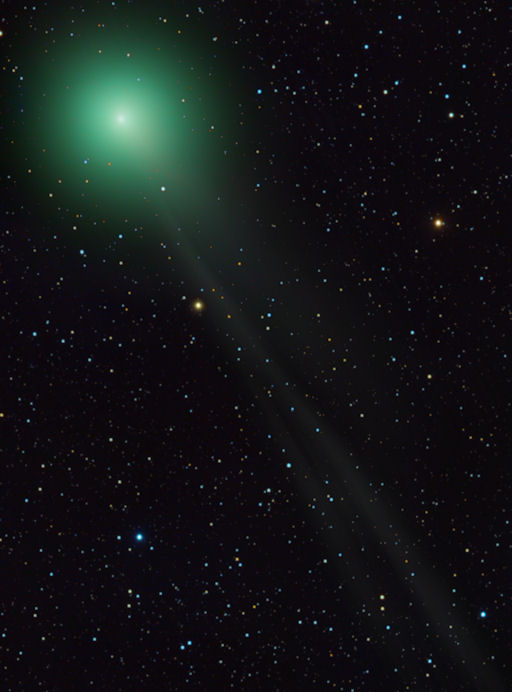
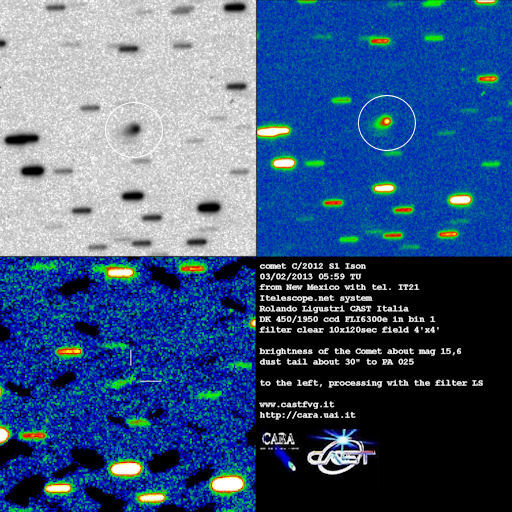
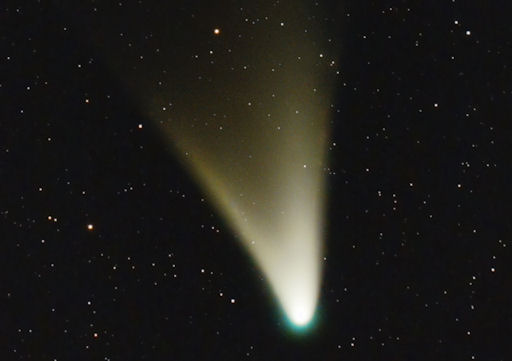

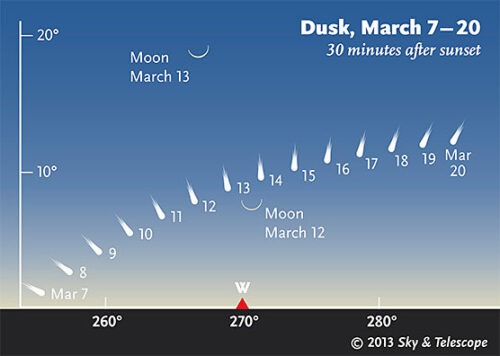


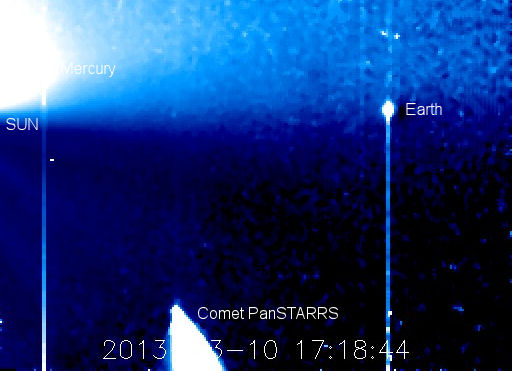

 Op
Op 

